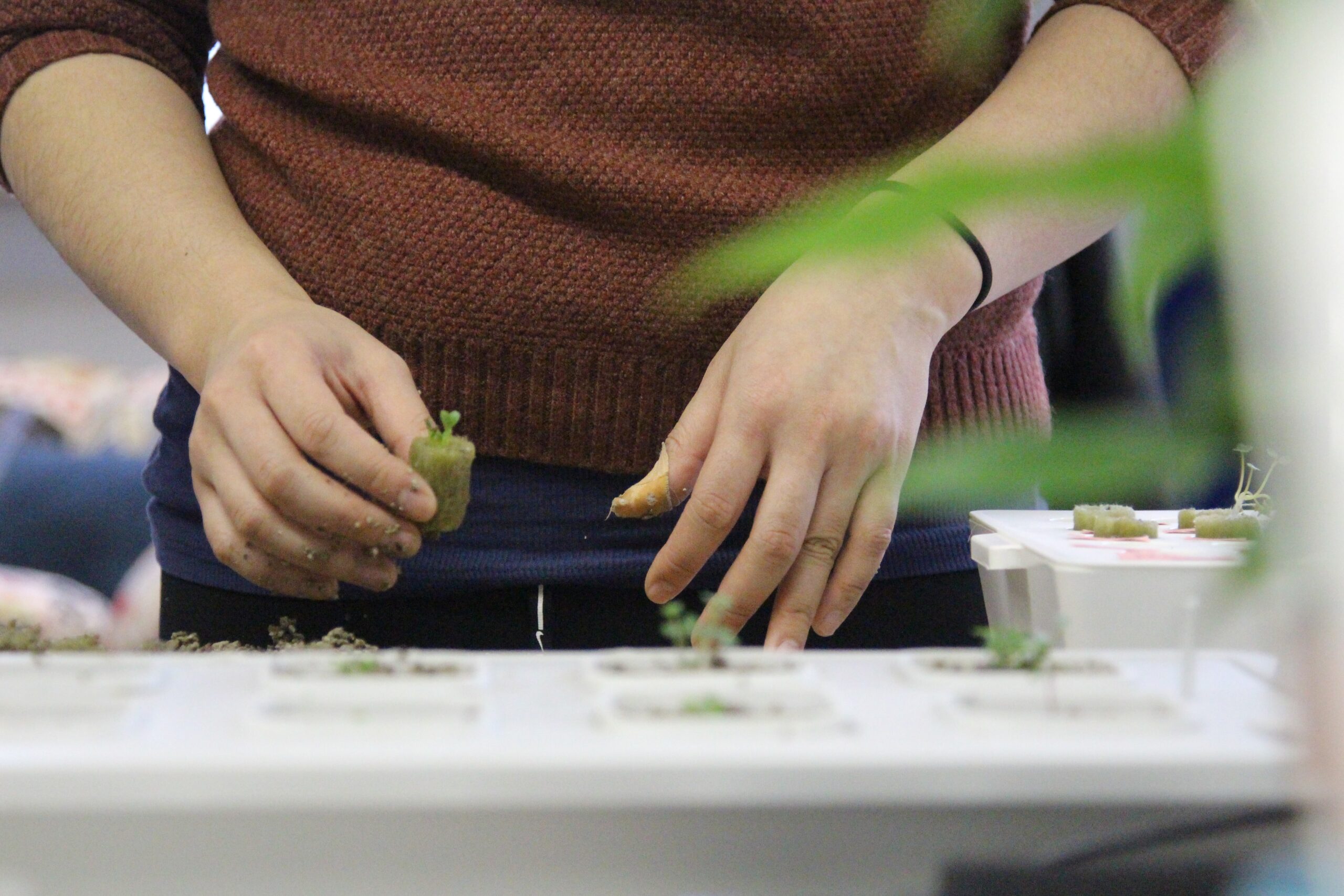
A Focused Research Organization to Reduce Antibiotic Resistance In Aquaculture
Research and engineering to reverse antibiotic resistance in aquatic bacteria, through the application of a well-validated CRISPR-based genetic system, can help catalyze safer, more sustainable land-based aquaculture as a nutritious and affordable food source.
The growing human population needs affordable, healthy sources of protein. With overfishing putting severe pressure on global fish stocks, aquafarming presents a potential alternative. The U.S. currently imports about 80% of its seafood, and most imports are produced by foreign aquaculture; expanding domestic aquaculture could help to close the $17 billion seafood trade deficit. But domestic aquafarming poses its own challenges, including the potential for environmental contamination near ocean-based operations. In such scenarios, high concentrations of fish within netted areas lead to bacterial and other waste contamination spreading beyond the arena of fish confinement. The alternative strategy of raising fish in isolated inland enclosures may pose less environmental risk, but also requires maintenance of water quality, frequent water filtration and, often, the use of high antibiotic concentrations mitigate bacterial fish pathogens that thrive in such overcrowded conditions. In practice, aquafarmers often try to reduce the level of antibiotics added to the water in the last few weeks of fish growth to drop their concentrations below mandated health standards for commercial fish, but these efforts are only partly effective and create significant logistical burdens.
Project Concept
We proposed the development of genetic systems to reduce the prevalence of antibiotic resistance in land-based aquafarming enclosures. We will develop harmless strains of environmental bacteria capable of transferring self-copying genetic cassettes to pathogenic bacterial strains of concern in aquaculture. With these strains, we aim to reduce virulence of those bacterial pathogens in high-density fish enclosures and scrub their antibiotic resistance.
The heart of the project is to apply a well-validated self-amplifying genetic system, referred to as Prokaryotic-Active Genetics (Pro-AG), to the task of scrubbing virulence and antibiotic resistance factors from bacterial pathogens in aquaculture facilities. Since publication of the seminal study describing this CRISPR-based system for reversing antibiotic resistance (Valderrama et al., 2019, Nat. Comm. 10, 5726), we have further advanced the Pro-AG platform by combining it with means of spreading between bacteria through horizontal transfer systems such as conjugal transfer elements or bacteriophage. We have also incorporated new genetic features to the Pro-AG toolkit including a system to cleanly and efficiently delete genetic elements such as virulence factors responsible for antibiotic resistance. Building on these core achievements, we will transfer the Pro-AG framework and novel integrated phage-based systems to several bacterial strains of concern to aquaculture with the goal of diminishing their antibiotic resistance (AR) genes and virulence potential.
What is a Focused Research Organization?
Focused Research Organizations (FROs) are time-limited mission-focused research teams organized like a startup to tackle a specific mid-scale science or technology challenge. FRO projects seek to produce transformative new tools, technologies, processes, or datasets that serve as public goods, creating new capabilities for the research community with the goal of accelerating scientific and technological progress more broadly. Crucially, FRO projects are those that often fall between the cracks left by existing research funding sources due to conflicting incentives, processes, mission, or culture. There are likely a large range of project concepts for which agencies could leverage FRO-style entities to achieve their mission and advance scientific progress.
This project is suited for a FRO-style approach for three reasons. First, it would be very difficult to attract VC or industry funding for this effort. The expected timeline is too long for most VCs who want to see a shorter horizon on return for their investments (on the order of 2-3 years). Second, the project has significant technical risk since we do not know how the Pro-AG systems will perform in the context of large enclosures densely packed with fish, which is a daunting environment for any anti-microbial intervention. Third, the scale of just the laboratory component of the project exceeds the level of funding normally available through standard channels of support for academic science, since Pro-AG delivery systems would need to be engineered in parallel for several different species of fish pathogens. This will also require more “applied” work than is typically supported by many academic research programs. For these reasons, the project fits perfectly in the sweet spot for a FRO.
How This Project Will Benefit Scientific Progress
If successful, our systems would greatly reduce the necessary frequency and concentrations of antibiotics to control bacterial fish pathogens. Solving or attenuating this central challenge to land-based aquaculture should help foster safe, sustainable and affordable sources of nutritious, uncontaminated fresh fish and help catalyze a shift away from unsustainable overfishing practices in the open ocean and environmentally hazardous practices in ocean-based aquafarms. This project could also have broader knock-on effects by enabling similar technical advances to reduce antibiotic resistance prevalence in other environmental settings (e.g., livestock, sewage treatment), which are also substantial sources of worldwide antibiotic resistance.
Key Contacts
Author
- Dr. Ethan Bier, UCSD, ebier@ucsd.edu
Referrers
- Alice Wu, Federation of American Scientists, awu@fas.org.
Learn more about FROs, and see our full library of FRO project proposals here.
At a time when universities are already facing intense pressure to re-envision their role in the S&T ecosystem, we encourage NSF to ensure that the ambitious research acceleration remains compatible with their expertise.
FAS CEO Daniel Correa recently spoke with Adam Marblestone and Sam Rodriques, former FAS fellows who developed the idea for FROs and advocated for their use in a 2020 policy memo.
When the U.S. government funds the establishment of a platform for testing hundreds of behavioral interventions on a large diverse population, we will start to better understand the interventions that will have an efficient and lasting impact on health behavior.
Integrating AI tools into healthcare has an immense amount of potential to improve patient outcomes, streamline clinical workflows, and reduce errors and bias.